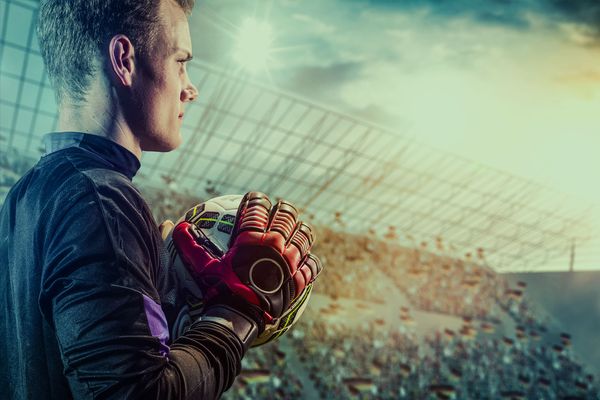
The influence of the goalkeeper in modern soccer
Amine El Assouri, Keeper In Motion
Imagine the goalkeeper as more than a last line of defence, but as a conductor of the pitch. The modern soccer scene is witnessing an exciting metamorphosis: goalkeepers are becoming strategic pivots, influencing the defense and the construction of the game. With skills that extend far beyond spectacular saves, their role in team tactics and decision-making is intensifying. Explore with us how these iconic figures redefine their position, transforming every match into a dynamic and captivating game of chess.
From goal line to driving line
The traditional role of the goalkeeper, historically perceived as a simple defensive bulwark, has undergone a remarkable transformation in recent decades. This position, once defined primarily by the objective of blocking shots and protecting the goal, has evolved to become one of the most tactical and versatile positions on the pitch.
Goalkeepers such as Thibaut Courtois embody this evolution. They no longer simply react to opposing attacking moves, but play an active part in building and managing their team’s play. Their role extends well beyond the six-meter box, playing a crucial part in launching attacks. With a clear vision of the pitch and an in-depth understanding of the dynamics of the game, these modern goalkeepers use their ability to play on foot to initiate swift, effective counter-attacks, transforming a defensive situation into an offensive opportunity.
The new panoply of the modern goalkeeper
Modern goalkeepers need a wide range of skills, going far beyond traditional reflex saves. Footwork is now crucial, requiring goalkeepers to control the ball under pressure, make accurate passes and initiate attacks. Quick decision-making is also essential, with goalkeepers needing to assess and react quickly to game situations to positively influence the match.
In addition to these technical skills, a thorough understanding of game strategy is essential. Goalkeepers need to analyze opposing play patterns and adapt to different match situations, playing a key role in defensive coordination and tactical adjustments. To meet these demands, goalkeeper training has diversified, incorporating advanced tactical and technical aspects. This includes specific exercises to improve footwork, simulations of match situations, and tactical sessions. This evolution in training reflects the increasingly technical and strategic nature of modern soccer, positioning goalkeepers as complete and essential players in their team’s overall strategy.
The goalkeeper, strategist and leader at the heart of the game
Modern goalkeepers, in addition to their traditional role, take on strategic and leadership functions that transform them into extensions of the coach on the pitch. Their unique position gives them a global view of the game, making them vital in managing defense, offensive transition and ball distribution. Their ability to communicate tactical adjustments and organize the team is vital to maintaining the balance between defense and attack.
At the same time, goalkeepers play a significant role in terms of leadership and psychological impact. Their presence, confidence and ability to handle pressure have a direct impact on team morale and performance. A goalkeeper who is communicative and focused is a source of inspiration and confidence for his or her team-mates, playing a decisive role in the efficiency and cohesion of the team as a whole.
Conclusion
The transformation of the goalkeeper in modern soccer is a striking example of the dynamic evolution of the sport. From simple defenders to key strategic players, goalkeepers have proved their vital importance in every aspect of the game. This recognition of their versatile role enriches our understanding of the complexity and strategy of modern soccer.
